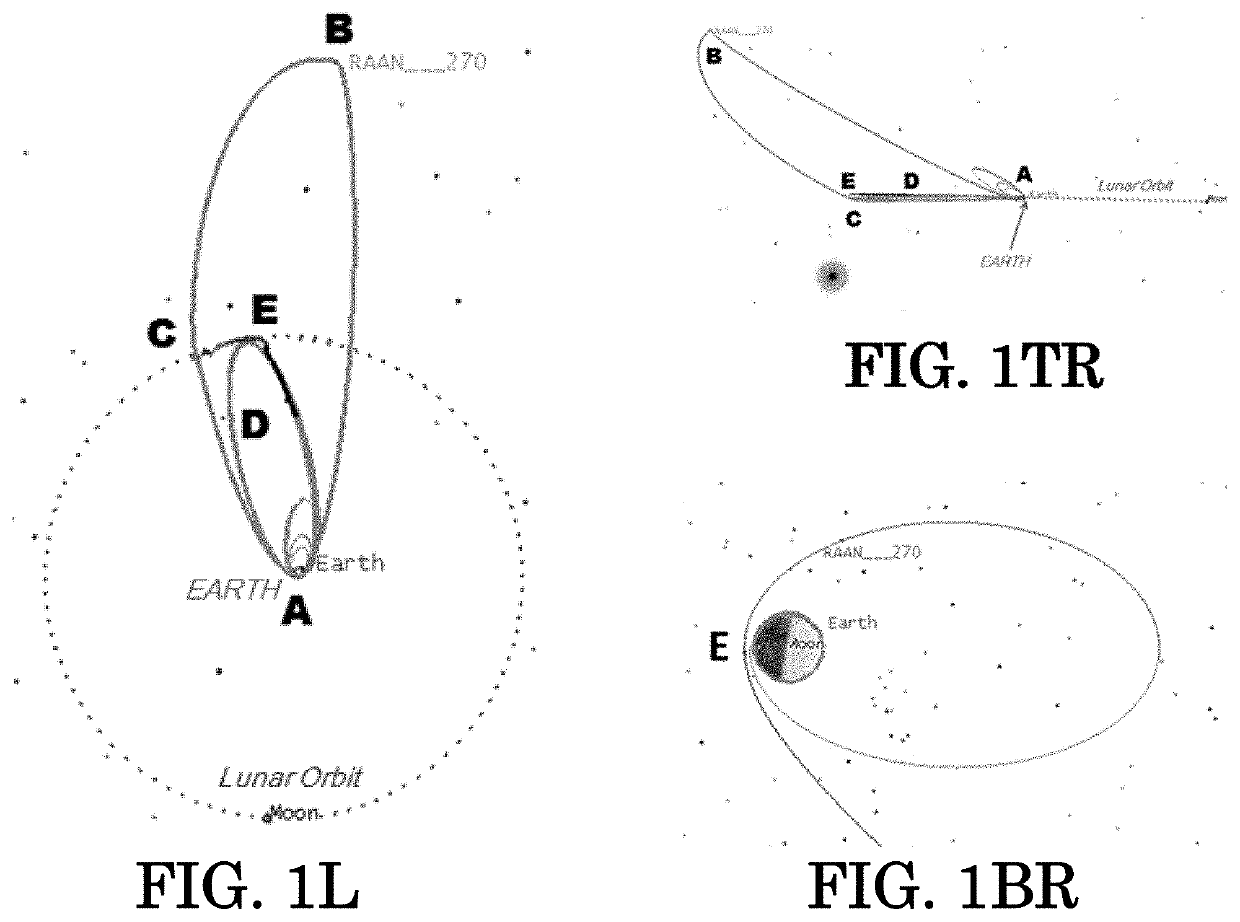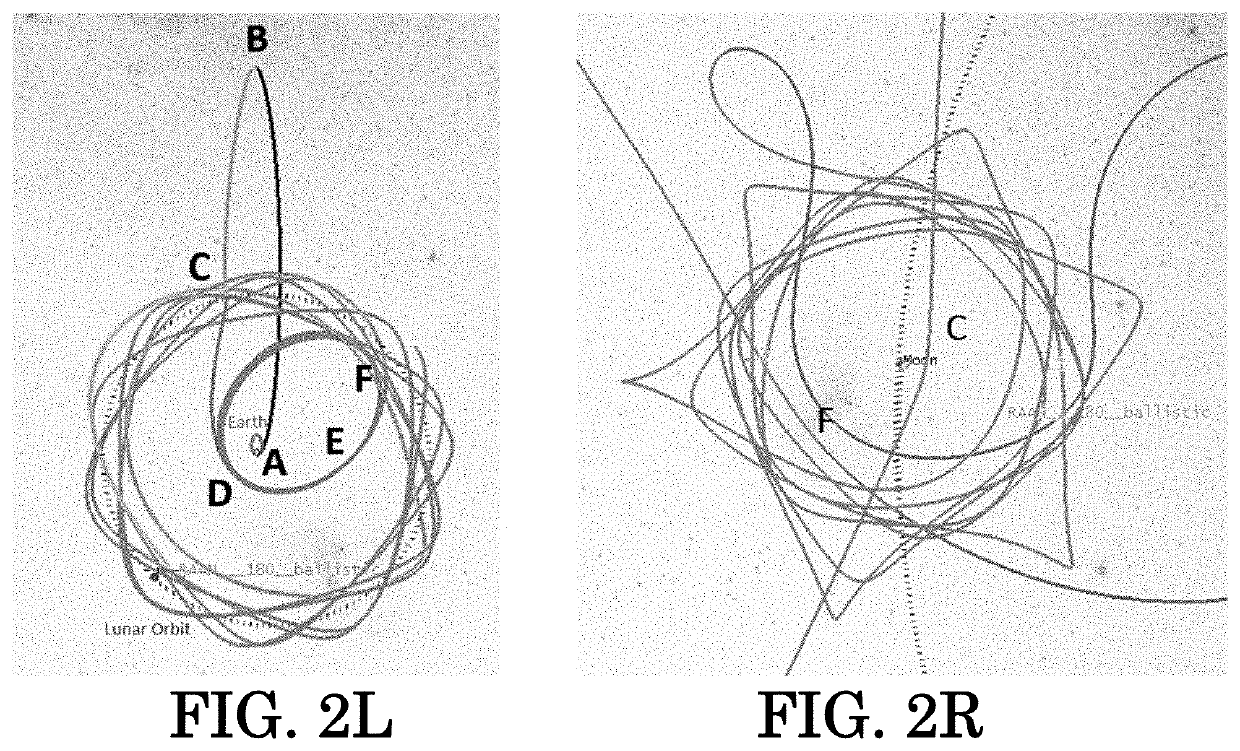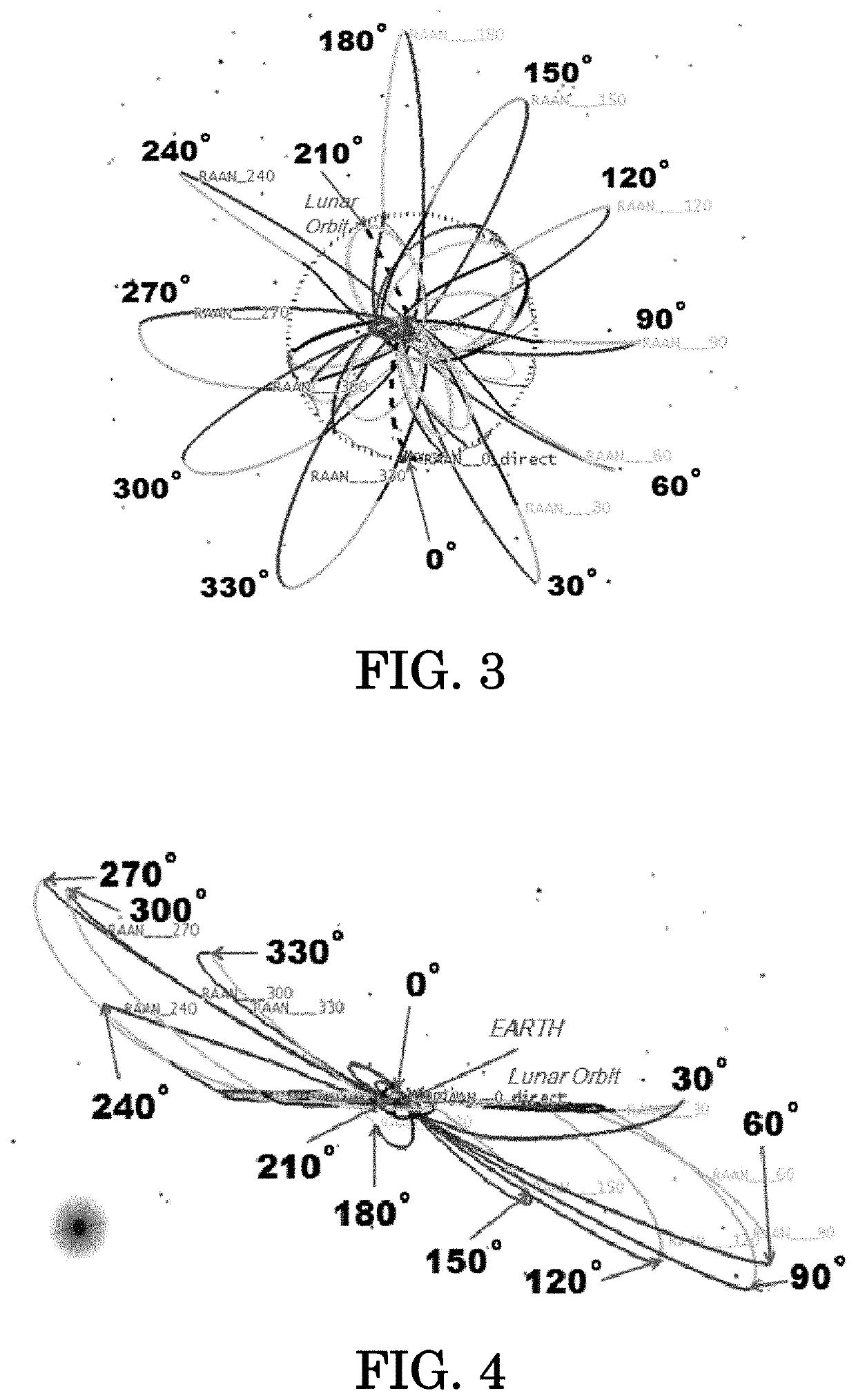Method for transferring a spacecraft from geosynchronous transfer orbit to lunar orbit
a technology of geosynchronous transfer and spacecraft, applied in the direction of transportation and packaging, aircraft, cosmonautic vehicles, etc., to achieve the effect of reducing possible finite burn losses
- Summary
- Abstract
- Description
- Claims
- Application Information
AI Technical Summary
Benefits of technology
Problems solved by technology
Method used
Image
Examples
Embodiment Construction
[0021]To demonstrate the proposed method, a geosynchronous transfer orbit (GTO), inclined at a specified inclination (here, 28.5 degrees) to the Earth's equatorial plane is connected to a lunar orbit either by standard orbit insertion (i.e., impulsive, or thrust needed for initial capture into lunar orbit, FIGS. 2L and 2R).
[0022]Although this method is applicable to GTOs with any local time of perigee, two specific GTOs are chosen for presentation since they represent boundary cases among all similar lunar flyby solutions analyzed (local time of perigee is solved in 2-hour increments throughout a 24-hour period; see FIGS. 3, 4, and 5). The first GTO requires the largest magnitude total ΔV and is the most inclined to the lunar orbit plane; its corresponding local time of perigee is 07:00 hours, which corresponds to a RAAN of 270 degrees. The second GTO presented requires the least total ΔV and is the least inclined to the lunar orbit plane; the corresponding local time of perigee is ...
PUM
 Login to View More
Login to View More Abstract
Description
Claims
Application Information
 Login to View More
Login to View More - R&D
- Intellectual Property
- Life Sciences
- Materials
- Tech Scout
- Unparalleled Data Quality
- Higher Quality Content
- 60% Fewer Hallucinations
Browse by: Latest US Patents, China's latest patents, Technical Efficacy Thesaurus, Application Domain, Technology Topic, Popular Technical Reports.
© 2025 PatSnap. All rights reserved.Legal|Privacy policy|Modern Slavery Act Transparency Statement|Sitemap|About US| Contact US: help@patsnap.com



